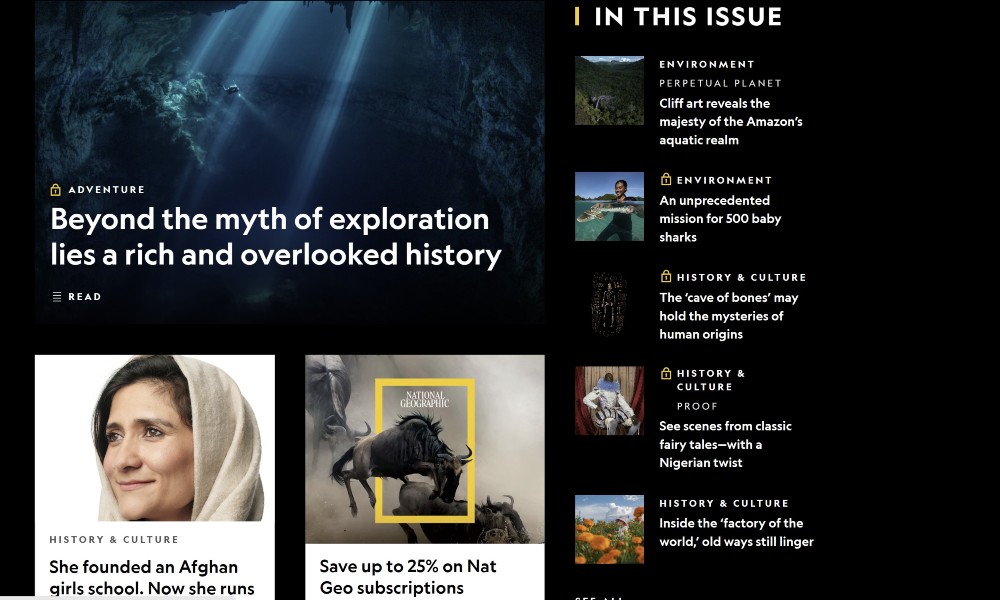Former Seattle Times environmental writer Craig Welch, a Nieman alumnus, was given an unusual opportunity this week: Welch took to Facebook to break news of his own demise.
“I had a great run,” he wrote. “Yesterday, the new National Geographic came in the mail with my 16th story – my last as a senior staff writer. The Yellow Border is laying off all of its staff writers and yesterday was my last day.
“I was exceptionally lucky for 8.5 years. I got to report from Antarctica, the Russian Arctic, Indonesia, Cape Horn, Ethiopia, Cape Town, and the Amazon – twice . . . I’ve been so lucky — I got to work w/incredible journalists and tell important, global stories. It’s been an honor. Onward!”
Welch is one of 19 staff writers and editors laid off as of June 30. One of the staffers cut by the magazine has been employed there nearly 40 years. Of course, in a press release, NatGeo tried to present a rosy picture on its staff cutbacks, saying: “Staffing changes will not change our ability to do this work, but rather give us more flexibility to tell different stories and meet our audience where they are across our many platforms. Any insinuation that the recent changes will negatively impact the magazine, or the quality of our storytelling, is simply incorrect.”
That assertion is highly questionable. Just look at what the Yellow Border is losing in Welch. He has done seminal work on global warming, witness a cover story “Forests are reeling from climate change – but the future isn’t lost,” and his piece from Siberia: “Arctic permafrost is thawing fast: That affects us all.” The article cogently linked the Arctic melt to release of methane and carbon dioxide into the atmosphere, which accelerates the pace of climate change.
At the Seattle Times, Welch is best known for his series on ocean acidification: “Sea Change: The Pacific’s Perilous Turn.” Perhaps the greatest honor received by the series came when Welch was attacked as a Cassandra by the UW’s climate-change soft-peddler Cliff Mass. Welch responded with a point-by-point refutation of Mass’ critique.
Staff writers have markedly improved the quality of research and reporting at National Geographic. I recall, years ago, a laudatory piece on the 600-foot-high Mica Dam on the Columbia River in British Columbia. The article failed to mention the enormous kill of moose, deer, and bears as the 90-mile-long reservoir was filled, or the fact that B.C. didn’t bother to log the forests being flooded.
It’s hard to see National Geographic as economically hurting. As of the end of 2022, NatGeo had 1.7 million subscribers,, according to the Alliance for Audited Media. It was announced this week that the Yellow Border will continue to publish monthly. As of the end of the year, however, it will no longer be available on newsstands.
NatGeo is owned by Disney and the non-profit National Geographic Society. In 2015, the society entered a $725 million for-profit agreement with 21st Century Fox, with Fox owning three quarters of the partnership. The Walt Disney Co. acquired Fox in 2018.
The news business has experienced sharp cutbacks of late. CNN has cut hundreds of employees from its payroll. ESPN laid off 20 employees on Friday. Bloomberg recently cut 10 positions from its national news desk. Buzzfeed has cut 12 percent of its staff, or nearly 200 positions, as its stock tumbled. One casualty at Buzzfeed is ex-Stranger news editor Dominic Holden, an active union organizer at the digital media company. Vice Media recently laid off a dozen employees, and filed for bankruptcy at the end of May.
Discover more from Post Alley
Subscribe to get the latest posts sent to your email.

I could imagine that the magazine could go forward with content from “contributors” rather than staff, and however unlikely, it’s conceivable that they could maintain the quality … but also without editors?
If the direct value of the content doesn’t matter to everyone (which sadly I’m sure is the case), there’s also an element of national prestige and promotion. Take two kids, one who grew up hearing Voice of America and another who read National Geographics from cover to cover – who’s more receptive to the American perspective of a modern world?
Also read that National Geographic Society got $750 million for selling out the magazine. There must be a better way for a civilization to operate.